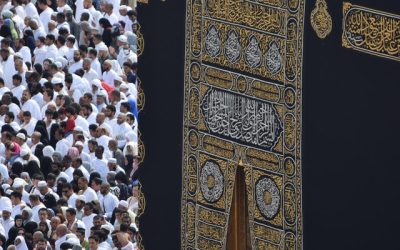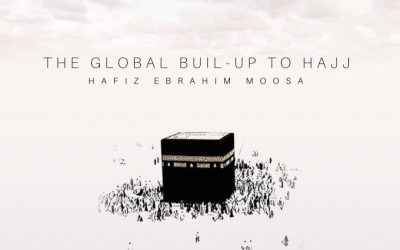The Kaaba is the holiest place in islam. For the Muslim community, the Kaaba holds a place analogous to that held by the former temple in jerusalem for jews.Wensinck, A. J; Ka`ba. Encyclopaedia of Islam IV p. 317 The qibla, the direction Muslims face during prayer, is the direction from their location on earth towards the Kaaba. It is around the Kaaba that ritual circumambulation is performed by muslims during the hajj (pilgrimage) season as well as during the umrah (lesser pilgrimage).
Physical attributes and location of the Kaaba
The Kaaba is a large masonry structure roughly the shape of a cube. (The name Kaaba comes from the Arabic word "muka'ab" meaning "cube"). It is made of granite from the hills near makkah, and stands upon a ten inch marble base, which projects outwards about .3 metres (1 foot). The most reliable approximations for the structural dimensions are: 15 metres (49') high, with sides measuring 10.5 metres (34') by 12 metres (39').Hawting, G.R; Ka`ba. Encyclopaedia of the Qur'an p. 76 The four corners of the Kaaba roughly face the four points of the compass. In the eastern corner of the Kaaba is the "Rukn-al-Aswad" (the black stone or al-Hajarul-Aswad), generally thought to be a meteorite remnant; at the northern corner is the "Rukn-al-Iraqi" ('The Iraqi corner'); at the west lies "Rukn-al-Shami" ('The Levantine corner') and at the south "Rukn-al-Yamani" ('The Yemeni corner').
It is covered by a black silk curtain decorated with gold-embroidered calligraphy. This cloth is known as the kiswah; it is replaced yearly. The shahada is outlined in the weave of the fabric. About two-thirds of the way up runs a gold embroidered band covered with qur'anic text.
Entrance to the inside of the Kaaba is gained through a door set 7 feet (2 m) above the ground on the north-eastern wall of the Kaaba. It is accessed by a wooden staircase on wheels, usually stored between the arch-shaped gate of Banu Shaybah and the well of zamzam. Inside the Kaaba, there is a marble floor. The interior walls are clad with marble half-way to the roof; tablets with Qur'anic inscriptions are inset in the marble. The top part of the walls is covered with a green cloth decorated with gold embroidered qur'anic verses. The building is believed to be otherwise empty. Caretakers perfume the marble cladding with scented oil, the same oil used to anoint the Black Stone outside.
Although not directly connected to it, there is a semi-circular wall opposite the north-west wall of the Kaaba, known as the hateem. It is three feet in height and five in length, and is composed of white marble. The space between the hateem and the Kaaba was for a time belonging to the Kaaba itself, and so is generally not entered during the tawaf (ritual circumambulation). It is also thought by some that this space bears the graves of prophet ishmael and his mother hagar.
Muslims throughout the world face the Kaaba during prayers, which are five times a day. For most places around the world, coordinates for Mecca suffice. In the Sacred Mosque, worshippers pray in concentric circles radiating outwards around the Kaaba. Therefore, the focus point is in the middle of the Kaaba.





0 Comments